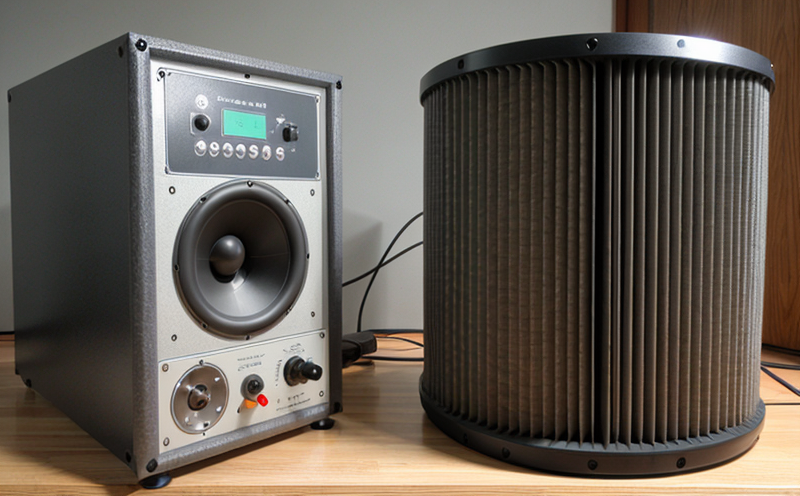ISO 2631-2 Vibration Testing in Passenger Ship Cabins
The International Organization for Standardization (ISO) has established a series of standards to ensure the safety, comfort, and well-being of individuals in various environments. Among these, ISO 2631-2 is particularly relevant for testing and evaluating vibration levels in passenger ship cabins. This standard provides specific guidelines for measuring and assessing the human exposure to vibrations on board ships, focusing on cabin floors as a critical area.
The importance of this testing cannot be overstated, especially considering that prolonged exposure to excessive vibration can lead to discomfort, health issues, and even reduced productivity among passengers and crew. By adhering to ISO 2631-2 standards, manufacturers and ship operators can ensure that their vessels meet the highest safety and comfort benchmarks, thereby enhancing customer satisfaction and brand reputation.
The testing process involves a series of precise measurements conducted using specialized equipment such as accelerometers placed on the cabin floor. The data collected is then analyzed to determine compliance with the vibration exposure limits outlined in ISO 2631-2. This ensures that passengers experience minimal discomfort due to vibrations, which can significantly enhance their overall travel experience.
Our laboratory uses cutting-edge technology and experienced professionals to conduct these tests accurately and efficiently. We employ state-of-the-art instrumentation, including accelerometers with high-resolution sensors capable of capturing even the minutest vibrations. Our team is equipped with comprehensive knowledge in marine acoustics and human vibration exposure, ensuring that every test adheres strictly to ISO 2631-2 requirements.
The results from these tests are meticulously documented and presented in clear, easy-to-understand reports. These reports include detailed information on the measured vibrations, comparisons against ISO limits, and recommendations for any necessary adjustments or improvements. Our clients can rely on us not only to conduct these tests but also to provide valuable insights that contribute to better design practices.
By incorporating ISO 2631-2 into your quality control processes, you demonstrate a commitment to passenger safety and comfort. This aligns with broader industry trends towards enhancing onboard experiences while ensuring regulatory compliance. Our laboratory's expertise in this area can help you stay ahead of the curve, maintaining high standards that set your vessels apart from competitors.
In summary, ISO 2631-2 vibration testing is a vital component of modern ship design and operation. It plays an essential role in safeguarding passenger health and comfort while ensuring compliance with international safety standards. By partnering with our laboratory for these tests, you can ensure that your vessels meet the highest benchmarks set by this important standard.
Our team is dedicated to providing accurate, reliable results that contribute positively to both operational efficiency and customer satisfaction aboard your ships. Let us help you achieve superior performance in passenger comfort through rigorous vibration testing.
Applied Standards
- ISO 2631-2: This standard specifies the method for measuring and evaluating human exposure to vibrations due to mechanical excitations, particularly focusing on cabin floors in passenger ships. It provides guidelines for determining acceptable levels of vibration based on comfort and health considerations.
- EN ISO 2631-1: While not directly applicable here, it complements the work done under ISO 2631-2 by providing broader context on human exposure to vibrations in general. Its principles are closely aligned with those of ISO 2631-2.
The use of these standards ensures that our testing methods remain current and relevant, aligning with international best practices in the field of marine acoustics and vibration analysis.
International Acceptance and Recognition
ISO 2631-2 has gained widespread acceptance across various sectors worldwide due to its comprehensive approach to addressing human exposure to vibrations. Many countries have adopted this standard as part of their regulatory frameworks, recognizing it as a key factor in ensuring passenger safety and comfort on board ships.
In the maritime industry, compliance with ISO 2631-2 is particularly valued because it reflects an ongoing commitment to innovation and excellence. Shipbuilders, operators, and owners who adhere to these standards enhance their reputation for reliability and quality assurance. Moreover, adherence to such international standards can facilitate smoother interactions between different stakeholders involved in the maritime ecosystem.
Our laboratory actively participates in standard-setting activities related to marine acoustics and vibrations. We collaborate closely with industry leaders, regulatory bodies, and academic institutions to ensure that our practices remain aligned with evolving global norms. This proactive approach ensures that we consistently deliver high-quality services tailored to meet current market demands.
Competitive Advantage and Market Impact
- Innovation Leadership: By leveraging advanced technology and methodologies in ISO 2631-2 vibration testing, we offer unique insights that help clients stay ahead of competitors. Our expertise allows us to identify emerging trends and challenges early on.
- Regulatory Compliance: Ensuring compliance with international standards is crucial for maintaining a competitive edge. We assist our clients in navigating complex regulatory landscapes confidently.
- Enhanced Customer Satisfaction: Meeting or exceeding ISO 2631-2 requirements translates directly into improved passenger experiences, leading to higher levels of customer satisfaction and loyalty.
- Prestige and Reputation: Partnering with a laboratory that adheres to stringent standards like ISO can significantly enhance the reputation of any organization within the maritime sector. This recognition fosters trust among stakeholders and potential partners.
The combination of these advantages positions our clients favorably in competitive markets, enabling them to deliver superior products and services while fostering long-term relationships with customers.





